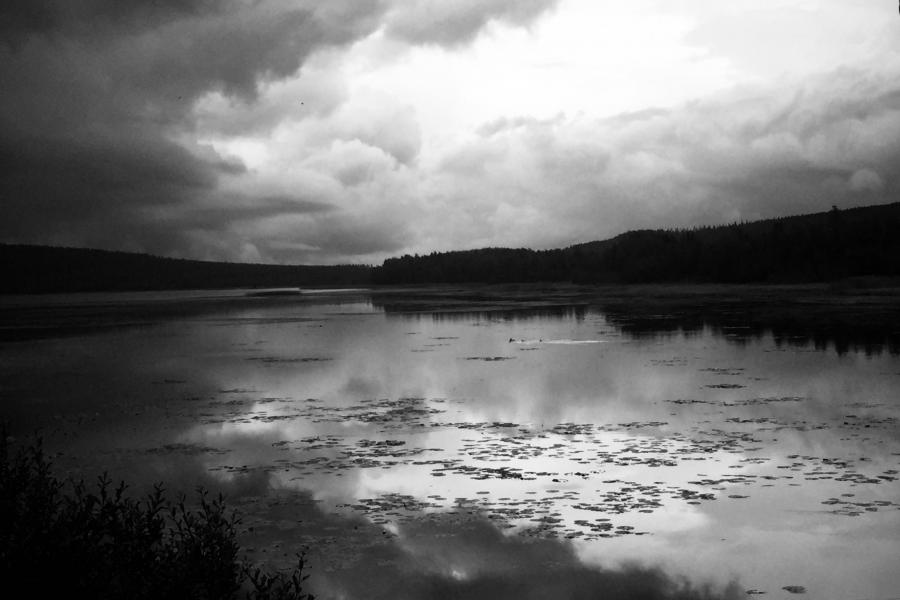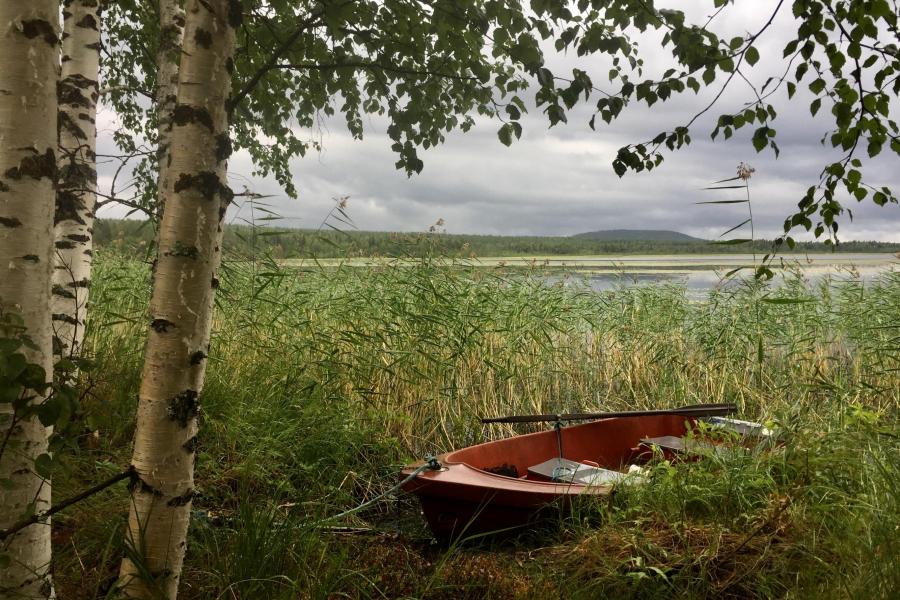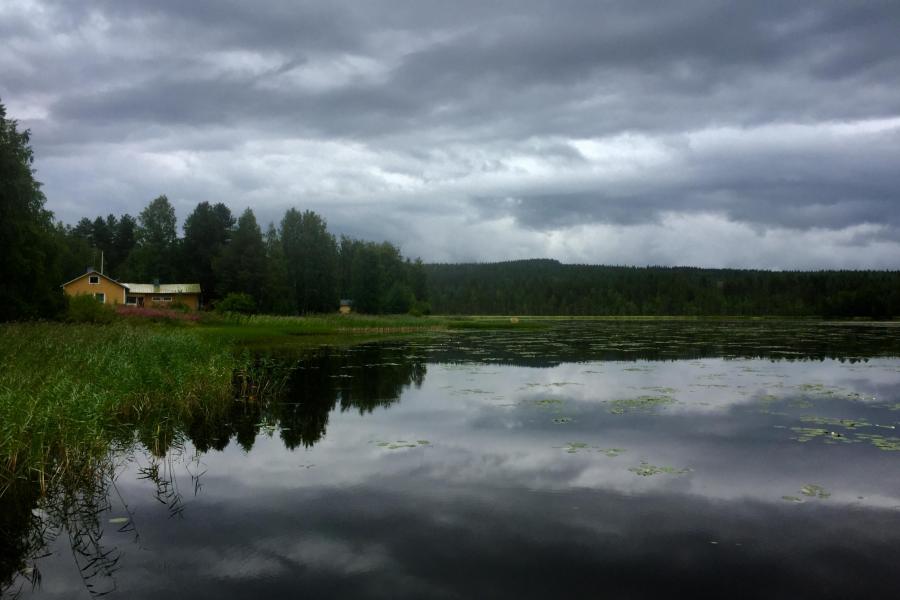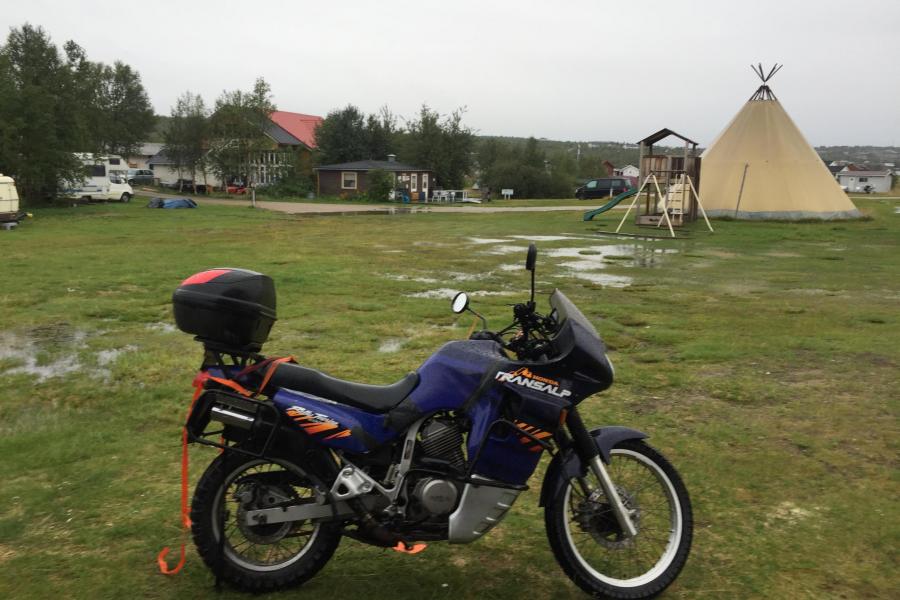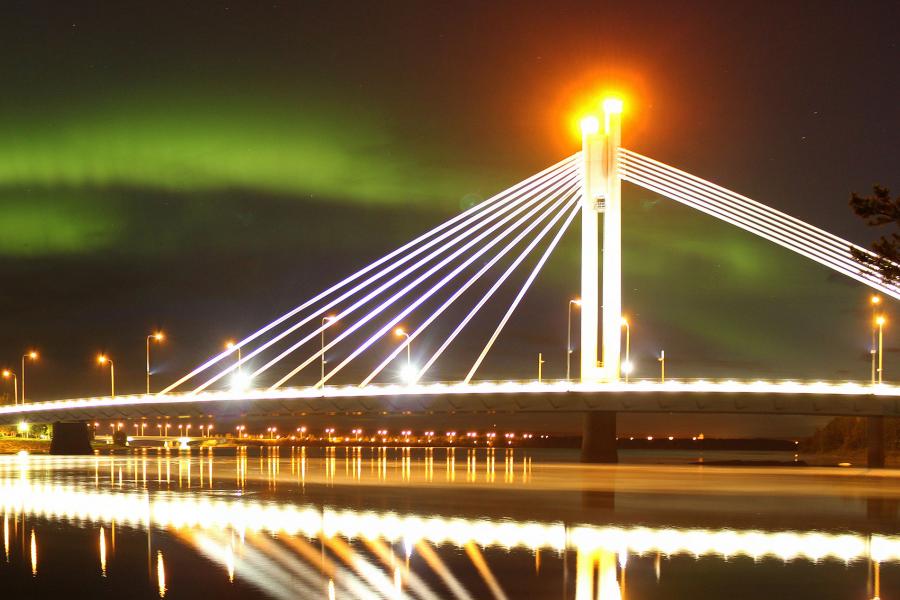Santa at the Artic Circle
Country
Helsinki treated me to a wonderful sauna. I stayed in Janne’s AirBnB, which was about the cheapest place in town. Being a bachelor who designed his own remodel of a little suburban house, he had a huge dark-tiled room with a 2-person jacuzzi, side-by-side dual showers, and an “instant on” Finnish sauna. The doors to everything were smoked glass— including the toilet.. Remember, he’s a bachelor. The downside was that nothing in the kitchen made any sense. A typical drawer might have one sauce pan, a spatula, a length of nylon rope, and a video game controller. Another might have a set of wrenches and a life-time supply of oregano, and a small bottle of shampoo. It was clean and comfortable however.
My ride north was under a hot sun and more of the unseasonably hot weather Europe has been having. I had been advised to take the overnight “car train” to Lapland and get some sleep moving forward but the train was booked many days in advance. Europeans all take their vacations in August.
My goal was Oulu which may sound like it’s in Samoa, but it’s actually one of the most northerly Baltic Sea ports in Finland. It has also been recognized as the most bicycle-friendly city in Finland. Every road has a walking/cycling trail and the city is 30% park. It is often quicker to commute by bike than to drive because of parkland shortcuts. On the other hand, winters can be -30 degrees Centigrade (about 20 below) and the winter sun is up only a few hours at mid-day. I found a church camp-turned hostel situated in the midst of a city park near a beautiful beach, referred to as the “Finnish Riviera” by the locals because it attracts rich Swedish tourists. Putting up my tent got me access to a nice shower and their on-site beer cooler. My next day’s goal was Rovaniemi and the Arctic Circle, reputedly the home of Santa Claus.
The road to Rovaniemi was impeccable asphalt (as have been all of the roads so far) and I got there in time to visit the Arktikum Museum, a fascinating look at the life of the indigenous Sami people of Lapland as well as the rigors of early Finnish settler life trading and logging in the north woods.
Rovaniemi itself was a history lesson. Angered by the Finns going in with their arch-enemies, the Russians half way through World War 2, the retreating Wehrmacht burned the entire town excepting the bus depot. They apparently did this quite routinely in Scandinavia, leaving thousands of people homeless and destitute in a very inhospitable climate. A memorial expressing gratitude for post-war aid lists the Red Cross and Quakers for feeding and caring for these victims.
After the war, Rovaniemi was planned and rebuilt by noted Finnish architect, Alvar Alto. Whimsically, he laid the city out in the shape of a reindeer’s head and antlers. And more recently, the city put up a new bridge across the Ounas River, which is quite stunning. It’s called Jatkankynttila Bridge— say that quickly three times! It means “Lumberjack’s Candle.”
It was now quite a bit cooler than it had been since my leaving Lithuania, and on Friday, Aug. 3rd , I headed to the edge of town to see “Santa’s home” and the Arctic circle. Uncharacteristic for the restrained and tasteful Finns, the Santa thing is quite commercialized— a sort of Wall Drug or Pedro’s South of the Border experience. Well, maybe not THAT bad. It was raining, after all. I got the obligatory photo under the latitude marker, thanks to a couple from Italy riding a Ducati, of course. It rained on and off for the next 23 hours as I headed farther north to the border with Norway at Kaukokeino.


